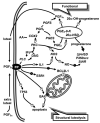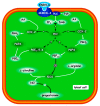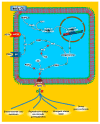Current Knowledge on the Multifactorial Regulation of Corpora Lutea Lifespan: The Rabbit Model
- PMID: 33503812
- PMCID: PMC7911389
- DOI: 10.3390/ani11020296
Current Knowledge on the Multifactorial Regulation of Corpora Lutea Lifespan: The Rabbit Model
Abstract
Our research group studied the biological regulatory mechanisms of the corpora lutea (CL), paying particular attention to the pseudopregnant rabbit model, which has the advantage that the relative luteal age following ovulation is induced by the gonadotrophin-releasing hormone (GnRH). CL are temporary endocrine structures that secrete progesterone, which is essential for maintaining a healthy pregnancy. It is now clear that, besides the classical regulatory mechanism exerted by prostaglandin E2 (luteotropic) and prostaglandin F2α (luteolytic), a considerable number of other effectors assist in the regulation of CL. The aim of this paper is to summarize our current knowledge of the multifactorial mechanisms regulating CL lifespan in rabbits. Given the essential role of CL in reproductive success, a deeper understanding of the regulatory mechanisms will provide us with valuable insights on various reproductive issues that hinder fertility in this and other mammalian species, allowing to overcome the challenges for new and more efficient breeding strategies.
Keywords: corpus luteum; rabbit; reproduction.
Conflict of interest statement
The authors declare no conflict of interest.
Figures





References
Publication types
LinkOut - more resources
Full Text Sources
Other Literature Sources

